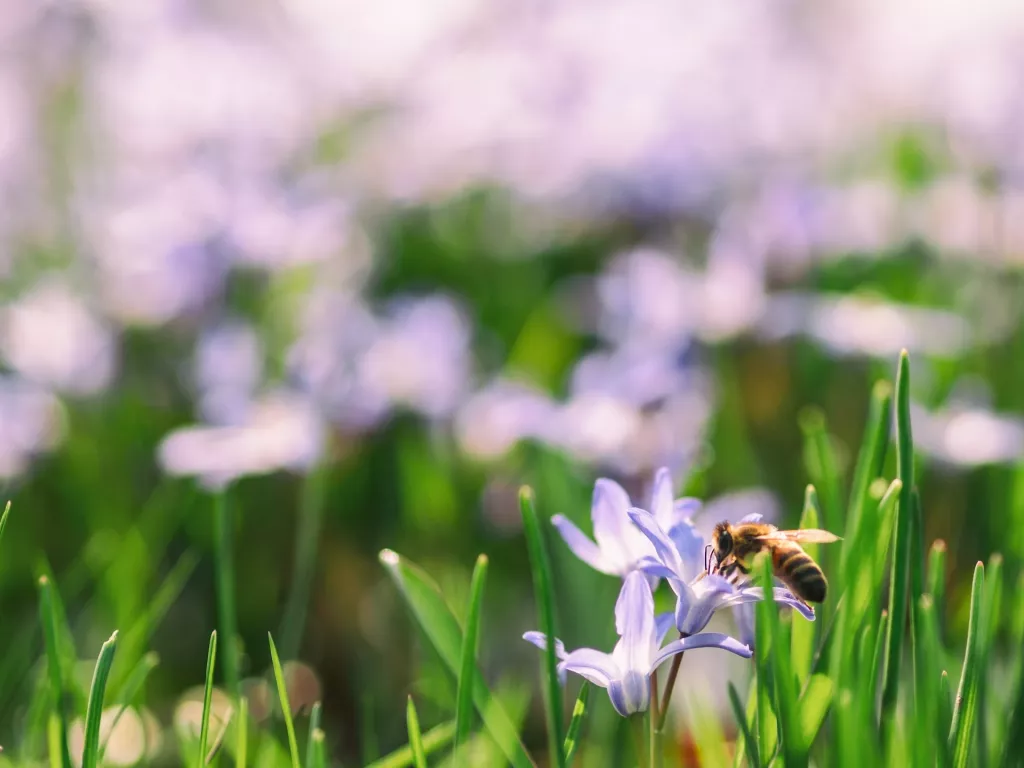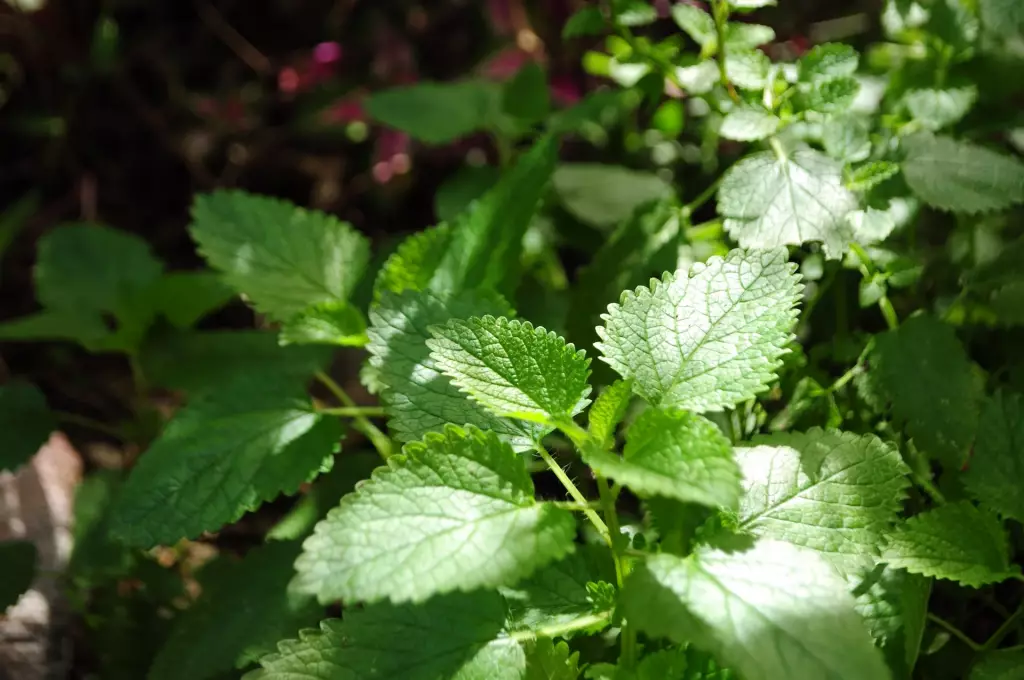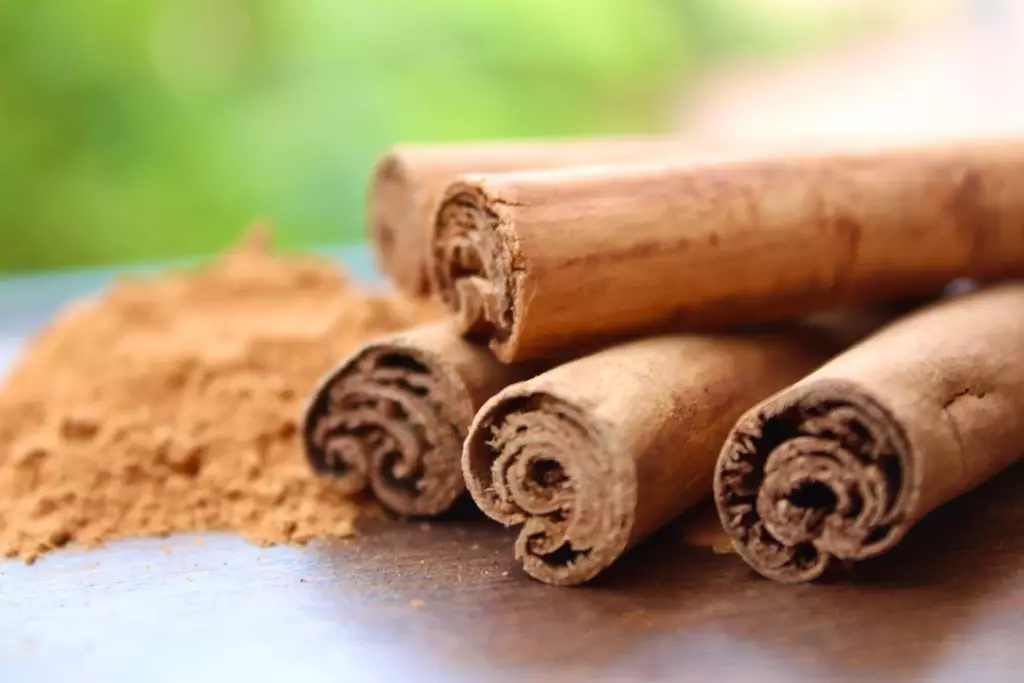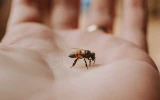How To Prevent Bees From Ever Coming Back Again
Preventing bees from coming back to a specific area can be difficult. They’re essential pollinators and have an important role in the ecosystem, so it’s morally wrong to kill them.
To prevent bees from coming back to a specific area, you can practice environmentally safe methods such as planting bee-repellent plants, applying bee-repellent sprays, and using cinnamon or mothballs.
Learning how to prevent bees from coming back can be useful for anyone who wants to tackle the issue head-on. Below, we’ll cover a few ways to get rid of bees permanently without killing them.
Summary
- Gardening bee-repellent plants can help discourage bees from returning to your home.
- Consistently apply bee repellent spray outside your home every other week.
- Mothballs and cinnamon are also effective in repelling bees from wandering into your backyard.
- Remove potential nesting sites so bees won’t be tempted to build a hive around your home.

On this page:
Prevent Bees From Coming Back By Planting Flowers
Planting bee-repelling plants around your home is a great way to get rid of bees without having to kill them. These plants should keep bees from even visiting your home. And if you’re not much of a gardener, then try burning citronella candles instead.
Peppermint
Peppermint is a popular plant that’s widely used in food and cuisine around the world. However, it also acts as a natural insect repellent. It has an overpowering smell that bees and wasps don’t like. They usually steer clear of areas that have peppermint plants.
Peppermint plants require shade to thrive. They don’t need to be in direct sunlight. Peppermint grows fairly quickly, and if you’re not careful, it could quickly take over your garden.

Citronella
Citronella is often used as a natural insect repellent. It has a pervasive smell that most insects don’t like, including bees. It’s easy to plant and can thrive when placed indoors or outdoors. Furthermore, it’ll need plenty of sunlight—at least 6 hours—and should be watered daily. The citronella plant soil should also remain well-drained.
Pennyroyal
Pennyroyal, also known as “Mentha pulegium” is a plant that has a similar scent to mint. And as we all know, bees and wasps don’t like the smell of mint. It’s a relatively small plant, reaching about 6–12 inches in height, and is usually planted in containers.
You can place pennyroyal in different parts of your garden to keep the bees at bay. It doesn’t need a lot of maintenance, except that it must be watered every day. It’s important to keep in mind that pennyroyal can be toxic if consumed internally, and to keep this plant out of reach from children and pets.
Wormwood
Wormwood, also known as “Artemisia absinthium” is a herb that contains absinthe, which is toxic to insects, including bees. Its pungent smell deters bees from entering an area. Keep in mind that wormwood can be an invasive species, so it should be planted with caution.
Wormwood needs lots of direct sunlight and well-drained soil to grow. Additionally, be careful when planting wormwood around edible plants in vegetable and herb gardens. Wormwood is considered a poor companion for young plants and seedlings.
Prevent Bees From Coming Back By Using A Repellent Spray
Homemade bee-repellent sprays are great for home gardens or lawn care. You can easily find the ingredients at home, like garlic and vinegar. More importantly, the spray solutions are pesticide-free and completely safe around people, pets, and small wildlife.
Vinegar spray
Vinegar spray is an easy-to-make and naturally effective method of removing bees from your yard. The strong odor can deter bees from the area; however, it’s important to note that vinegar is toxic to bees. If you directly spray the vinegar on the bees, it will kill them.
Instead, use a weak vinegar mixture of about 1 part vinegar to 8 parts water in a 1-quart spray bottle. Spray it on surfaces or plants to keep them away. You can also set up a small open container with vinegar to prevent bees from hovering around a specific area.
Garlic spray
Garlic spray is another effective bee repellent and is non-toxic to bees. Garlic contains sulfurous compounds and can act as a natural repellent for many common insects. The strong smell is something bees hate.
6 cloves mixed into 1 gallon of water gives you a weak garlic spray. For maximum effectiveness, spritz the plants and outdoor surfaces every other week.
Prevent Bees From Coming Back By Using Mothballs
Like other small insects, bees don’t like the smell of mothballs. It’s an effective pest deterrent, but can be harmful to people. It’s made out of naphthalene or paradichlorobenzene, which are insecticides and can be poisonous when inhaled in an enclosed space. However, if placed outdoors, the toxicity is less concentrated, which can act as a natural deterrent.
Simply hang the mothballs or put them inside containers around the specific area where bees hover, and the smell will discourage the bees from coming back. Additionally, you can use mothballs to kill other pests such as silverfish, moths, etc.
Prevent Bees From Coming Back By Using Cinnamon
Another popular method of getting rid of bees is cinnamon. Much like peppermint and citronella oil, bees don’t like the smell of cinnamon. It’s proven that placing cinnamon sticks in a jar or container close to a beehive is very effective in driving them away. You can also use cinnamon powder to sprinkle them outside your home.
It takes around 1–2 weeks for this method to work. The bees will move away because of the cinnamon’s strong smell.

Why Do Bees Come Back to the Same Spot?
Bees return to the same spot because they can detect remnants of a previous infestation. Through pheromones, they can tell if a previous colony has lived in a particular location. And if the honeycomb is not completely removed, the smell can attract bees back to the infested spot.
If the original bees aren’t there to defend the particular area, the other bees will take residence and inform the others that this is a good place to build a hive. If this has happened to your home many times, then your best bet is to hire a professional bee removal service.
As experts, they know what to look for and can help you prevent another bee infestation. They can bee-proof your house and ensure the infested spot is clean of bee pheromones and hive remnants. Additionally, they can also provide you with useful tips on preventing bees from ever coming back to your home again.
Additional Tips to Prevent Bees From Coming Back
There are some cases in which it’s not always appropriate or necessary to keep them away. If the bees aren’t causing a problem and do not pose a threat to human health or safety, it’s best to just leave them alone and enjoy their presence in your garden or backyard.
It’s important to note that in most cases, bees are not aggressive and will not attack unless they feel threatened.
- Remove the source of attraction. If bees are attracted to a specific flower or food source, remove it from the area.
- Seal entry points: If the bees are entering a structure, such as a house or shed, make sure to seal off any potential entry points.
- Reduce potential nesting sites: Bees will often nest in hollow trees, empty flower pots, and other similar spaces. Remove or cover these potential nesting sites to discourage bees from building a nest in the area.
- Consult with a professional: If the bees are causing a problem, it’s best to consult with a pest control expert or professional beekeeper who can safely and humanely remove the bees and prevent them from returning.
